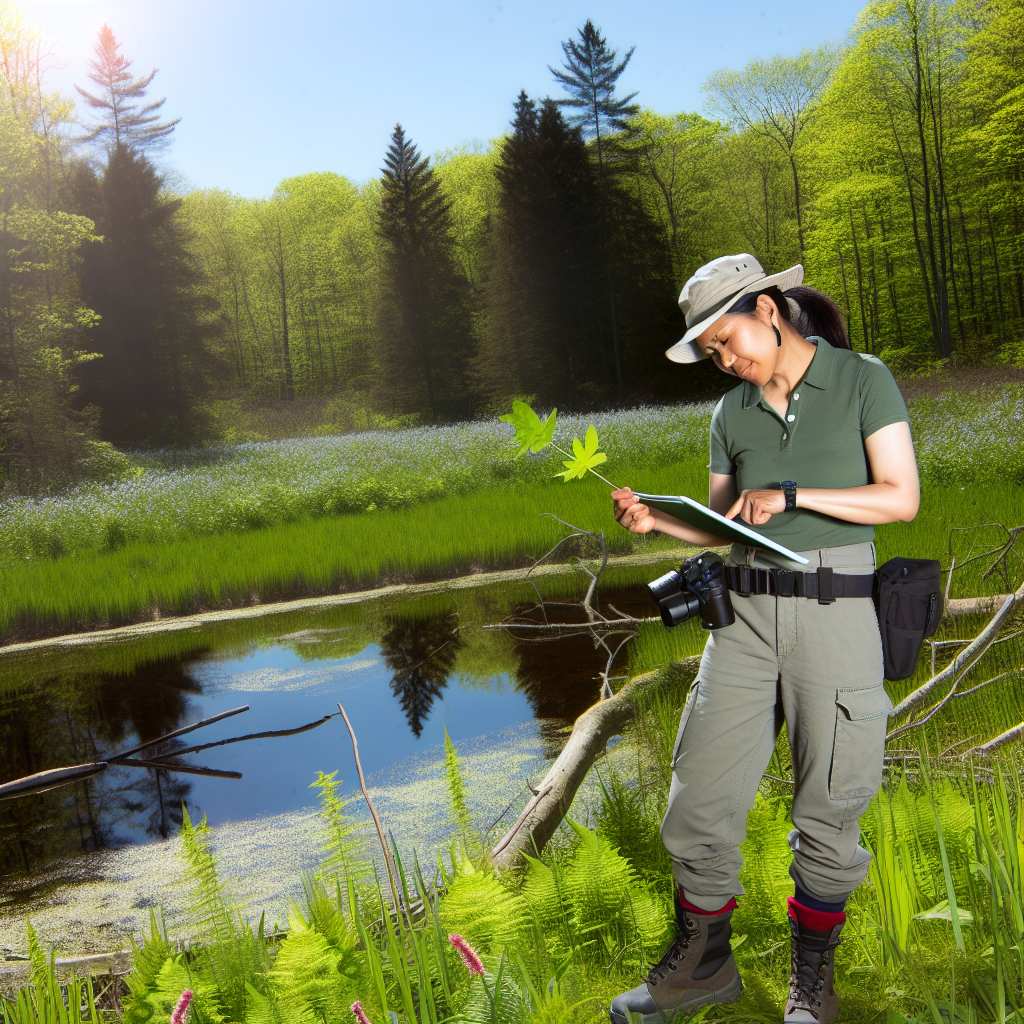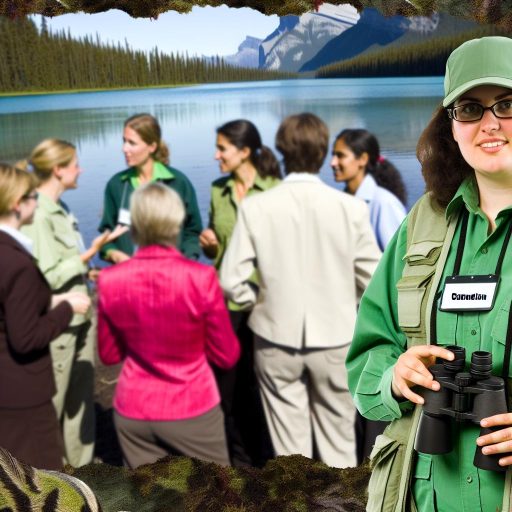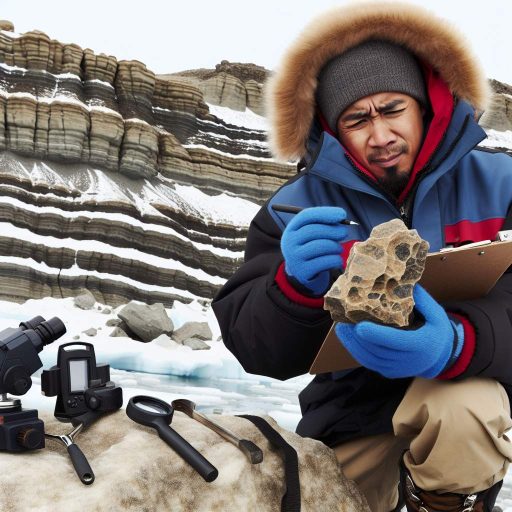Understanding Ethical Considerations in Wildlife Research
Importance of Ethics in Wildlife Research
Ethical considerations are crucial in wildlife research.
Researchers must prioritize animal welfare at all times.
Moreover, they should respect the habitats they study.
Ethics guide interactions with wildlife populations.
Additionally, they promote public trust in scientific work.
Guidelines for Ethical Conduct
Adhere to established guidelines when conducting research.
Utilize permits and follow regulations relevant to local fauna.
Ensure that all field procedures minimize stress and harm.
Don’t capture or disturb animals unnecessarily.
Implement monitoring techniques that respect animal behavior.
Engaging with Local Communities
Involve local communities in wildlife research efforts.
Provide opportunities for education and collaboration.
Respect traditional knowledge and practices related to wildlife.
Build partnerships that support conservation goals.
Incorporate feedback from local stakeholders into research plans.
Cultural Sensitivity and Respect
Cultural considerations are vital in wildlife studies.
Understand and respect the beliefs of local populations.
Avoid actions that may harm local cultural practices.
Engaging with diverse perspectives enriches research outcomes.
Always communicate findings in a culturally appropriate manner.
Transparency and Accountability
Maintain transparency throughout the research process.
Share methodologies and findings with the public.
Publish results in accessible formats for broader audiences.
Encourage feedback and questions from different communities.
Take responsibility for the impact of your research.
Unlock Your Career Potential
Visualize a clear path to success with our tailored Career Consulting service. Personalized insights in just 1-3 days.
Get StartedEssential Gear and Equipment for Fieldwork
Clothing and Footwear
Wildlife biologists require durable clothing for varied weather conditions.
Choose moisture-wicking layers to keep dry during field tasks.
Invest in insulated jackets for colder environments.
Waterproof boots provide traction and comfort in rugged terrains.
Remember to wear hats and sunglasses for sun protection.
Navigation Tools
Reliable navigation tools are crucial for effective fieldwork.
GPS devices help track locations and navigate unfamiliar areas.
Topographic maps provide important terrain information.
A compass remains a valuable backup for GPS devices.
Data Collection Instruments
Data collection is a vital part of wildlife research.
Field notebooks allow for quick jotting of observations.
Digital cameras capture important visual data for studies.
Binoculars help in observing wildlife from a distance.
Use GPS collars or tags for tracking animal movements.
Field Gear and Tools
Essential tools ensure effective work in the field.
Field bags organize equipment for easy access.
Use multitools for various tasks during expeditions.
Field guides assist in identifying local flora and fauna.
Flashlights and headlamps prove useful for low-light conditions.
Safety and First Aid Supplies
Safety gear is essential for fieldwork protection.
First aid kits help address minor injuries quickly.
Fire starters and emergency blankets are crucial in unexpected situations.
Wear gloves when handling potentially hazardous materials.
Communication Devices
Staying connected in remote areas is vital.
Two-way radios facilitate instant communication among team members.
Ensure mobile phones are fully charged and kept in waterproof cases.
Satellite phones serve as backups in areas with no reception.
Techniques for Safe Animal Handling and Restraint
Preparation for Fieldwork
Begin your fieldwork with proper preparation.
Review species-specific guidelines before heading out.
Gather all necessary equipment for animal handling.
Ensure to include safety gear and first aid supplies.
Familiarize yourself with the animal behavior beforehand.
Understanding Animal Behavior
Recognizing signs of stress is crucial for safe handling.
Observe the animal from a distance first.
This allows you to gauge its behavior and mood.
Slow movements can help minimize anxiety in the animal.
Always be mindful of your own body language.
Handling Techniques
Use appropriate handling techniques for different species.
For small mammals, use a cloth to gently restrain them.
For larger animals, employ trained assistants if possible.
Always approach animals calmly and confidently.
Using a catch pole can help with larger, scared animals.
Restraint Devices
Familiarize yourself with various restraint devices.
Soft leashes work well for most pets and small animals.
For larger wildlife, consider using padded hobbles or ropes.
Make sure devices are appropriate for the animal’s size.
Check all equipment for wear and tear before use.
Post-Handling Procedures
After handling, ensure the animal’s well-being.
Monitor their behavior for signs of distress or injury.
Provide a calm environment as they recover.
Document the handling procedure for future reference.
Share insights with team members for continuous improvement.
Delve into the Subject: Educational Pathways to Become a Geologist
Effective Data Collection Methods and Tools
Choosing the Right Equipment
Selecting proper equipment is crucial for successful fieldwork.
Begin by considering the environment where you will work.
For instance, binoculars can enhance your viewing distance.
Moreover, field cameras capture important wildlife behavior.
GPS devices allow you to track movements efficiently.
Data Collection Techniques
Observational data collection is often the foundation of wildlife research.
Use direct observation to document animal behavior in real-time.
Consider employing automated recording systems for more efficiency.
Ethograms can help categorize observed behaviors effectively.
Utilizing Field Notes
Keeping detailed field notes is essential for data integrity.
Record environmental conditions, animal sightings, and any anomalies.
Structured notes can facilitate analysis during later stages of research.
Clearly label your notes to avoid confusion later on.
Engaging with Local Expertise
Collaboration with local experts enhances your understanding of the area.
Engage with conservation organizations to gain insights.
Local knowledge can provide context that benefits your research.
Additionally, attending workshops can improve your skills and networking.
Leveraging Technology
Technology can significantly aid data collection efforts.
Consider using mobile apps designed for wildlife biology.
Drones offer a unique perspective and can monitor wildlife from above.
Remote sensing tools can track changes in habitats effectively.
Ensuring Accurate Data Recording
Consistency is key in data collection across all fieldwork stages.
Establish a clear protocol to follow during data entry.
Regularly back up your digital data to prevent loss.
Moreover, review and validate your data periodically.
Uncover the Details: How Geneticists Impact Canadian Healthcare and Innovation
Strategies for Navigating Challenging Field Conditions
Preparation is Key
Before heading into the field, gather all necessary equipment.
Create a checklist to ensure you don’t forget anything.
Pack appropriate clothing based on weather forecasts.
Additionally, prepare for potential emergencies.
Understand Your Environment
Familiarize yourself with the area before you arrive.
Map out the key locations you need to visit.
Research local wildlife behaviors and seasonal patterns.
This knowledge will enhance your observation skills.
Use Technology Wisely
Utilize GPS devices for accurate navigation.
Mobile apps can help you identify species in real time.
Record your findings digitally for easy data management.
However, ensure you have backup plans for dead zones.
Stay Safe in Adverse Conditions
Monitor weather updates regularly to avoid hazards.
When storms approach, seek shelter immediately.
Always have a first aid kit accessible during fieldwork.
Furthermore, establish a protocol for communication.
Adapting to Unexpected Challenges
Remain flexible and ready to adapt your plans.
Engage with local experts for immediate advice.
If an area is inaccessible, identify alternatives promptly.
Keeping an open mind will reduce stress during fieldwork.
Team Collaboration
Work closely with your team to share observations.
Assign roles based on each member’s strengths.
Coordinate efforts to cover more ground efficiently.
Regular check-ins will maintain team morale and focus.
You Might Also Like: Role of Wildlife Biologists in Species Preservation

Building Strong Relationships with Local Communities and Stakeholders
Understanding Community Perspectives
Engaging with local communities enhances your research efforts.
Take time to understand their viewpoints and experiences.
Listening opens avenues for collaboration and trust-building.
Start conversations that focus on their needs and concerns.
Establishing Trust
Trust is the foundation of successful partnerships.
Be transparent about your research goals and methods.
Clearly communicate how your work benefits the community.
Respect community knowledge and local practices.
Involving Stakeholders
Identify key stakeholders who can influence or support your work.
Involve them in project planning and decision-making processes.
This approach fosters ownership and responsibility.
Highlight the importance of their contributions in meetings.
Building Long-term Relationships
Relationships should extend beyond individual projects.
Regularly follow up with community members and stakeholders.
Create platforms for ongoing communication and feedback.
Share updates on your research and its impacts regularly.
Providing Education and Resources
Organize workshops to educate the community about wildlife dynamics.
Disseminate information that aligns with local interests and needs.
Offer resources that promote wildlife conservation initiatives.
Encouraging community involvement enhances their commitment.
Celebrating Success Together
Acknowledge the community’s contributions to project successes.
Celebrate milestones together to strengthen ties.
Host events that showcase research outcomes and community benefits.
Creating a sense of shared accomplishment fosters continued collaboration.
Gain More Insights: Geologist Career Growth Opportunities in Canada
Importance of Species Identification and Taxonomy Skills
Understanding the Role of Taxonomy
Taxonomy forms the backbone of biological classification.
It helps wildlife biologists identify and categorize species effectively.
Clear classification allows for better communication among researchers.
Additionally, taxonomy guides conservation efforts and management strategies.
Enhancing Species Identification Skills
Accurate species identification is critical in the field.
It enables biologists to monitor population dynamics and health.
Familiarity with species characteristics speeds up data collection.
Moreover, it aids in recognizing invasive species quickly.
Practical Applications of Taxonomy
Fieldwork often requires quick identification under challenging conditions.
Biologists use various methods, such as visual identification and DNA barcoding.
These techniques improve reliability in distinguishing similar species.
Furthermore, they facilitate assessments of ecological impacts.
Building a Strong Taxonomic Foundation
Wildlife biologists should pursue continuous learning in taxonomy.
Workshops and online courses provide valuable resources for skill enhancement.
Field guides serve as practical references for species identification.
Regular practice leads to increased confidence in the field.
Collaborative Efforts in Taxonomic Research
Collaborating with taxonomists strengthens research outcomes.
Joint field trips and shared expertise provide unique insights.
Furthermore, these collaborations foster a deeper understanding of biodiversity.
Establishing networks enhances communication among scientists.
Creating a Comprehensive Fieldwork Plan and Checklist
Importance of a Fieldwork Plan
A well-structured fieldwork plan enhances productivity in wildlife studies.
This plan helps organize tasks and allocate resources effectively.
Moreover, it reduces risks and ensures compliance with regulations.
Identifying Objectives
Clearly define your research objectives before starting fieldwork.
Consider what specific questions you aim to answer during your study.
This clarity will guide your methods and data collection techniques.
Selecting Study Sites
Choose study sites based on your research objectives and species needs.
Evaluate the accessibility, safety, and ecological characteristics of each site.
Additionally, check for any permits or permissions required for access.
Developing a Checklist
A comprehensive checklist keeps you organized during fieldwork.
Include essential equipment, permits, and any personal items needed.
Regularly update your checklist based on lessons learned from previous outings.
Essential Field Equipment
- Binoculars and field guides for species identification
- GPS devices for tracking locations and movements
- Cameras for documentation of flora and fauna
- Field notebooks for recording observations
Safety and Health Considerations
- First aid kit for treating minor injuries
- Water and snacks to maintain energy levels
- Sun protection such as sunscreen and hats
- Proper clothing suited for the environment and weather conditions
Scheduling Field Days
Plan your field days considering weather and seasonal wildlife patterns.
Additionally, coordinate with team members to ensure availability.
Flexibility in scheduling allows for adjustments based on real-time conditions.
Collecting Data Effectively
Establish protocols for accurate and consistent data collection.
Consider using digital tools for data entry to minimize errors.
Regularly back up data to prevent loss during fieldwork.
Reviewing and Adjusting the Plan
After initial fieldwork, review your plan for effectiveness and relevance.
Adjust procedures based on challenges or unexpected findings.
This iterative approach improves future fieldwork effectiveness.
Additional Resources
The hidden costs of fieldwork are making science less diverse




